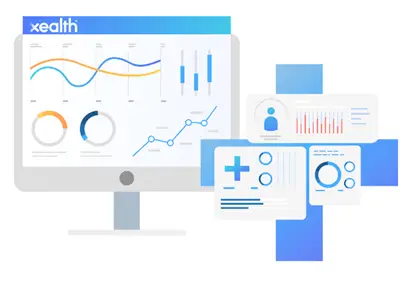
What You Should Know:
– Xealth, a leading force in scaling digital health solutions, has unveiled Dewey, a performance-based, digital health benchmarking tool.
– Incorporating more than 20 million assets and programs distributed from more than 400 hospitals to more than five million patients over seven years, Dewey calculates engagement benchmarks from nearly 1000 digital health programs.
– Additionally, the platform will incorporate AI-powered features that personalize recommendations for specific patient populations.
Unprecedented Insights for Data-Driven Decisions
Leveraging its experience distributing over 20 million digital health assets to more than 5 million patients over seven years, Xealth offers unparalleled insights. Dewey allows healthcare systems to:
- Visualize and Track Progress: Customers can monitor their digital health programs in real-time using interactive charts, gauging their effectiveness and identifying areas for improvement.
- Benchmark Against Peers: Dewey provides anonymized data on how similar programs perform in other healthcare systems. This enables data-driven decisions to optimize program design and outreach strategies.
- Actionable Insights Across Categories: Dewey goes beyond basic metrics. It allows for comparisons across various healthcare categories (e.g., preventative care, chronic disease management) and service lines (e.g., cardiology, oncology). This empowers healthcare systems to identify top-performing programs and replicate their success across different patient populations.
- Segmenting Patient Engagement: Dewey allows for deep dives into patient engagement. Healthcare systems can compare program performance for specific demographics, identifying which outreach methods resonate best with different patient groups.
Engagement Trends Revealed
Dewey sheds light on patient interaction rates across various healthcare categories. Oncology programs, such as those focused on treatment decisions or survivorship, boast the highest engagement rates. Conversely, behavioral health programs continue to face challenges in attracting patient interaction.
Here’s a breakdown of patient interaction rates by healthcare category:
- Pediatrics (73.14%)
- Palliative & Hospice (42.68%)
- Surgery (42.04%)
- Chronic Disease Management (38.34%)
- Physical Therapy & Rehab (37.66%)
- Oncology (37.5%)
- Family & General Medicine (36.27%)
- Preventative Care (33.05%)
- Innovation and Research (32.61%)
- Women’s Health (28.38%)
- Behavioral Health (18.38%)
- Virtual Care Enablement (15.73%)
“With the volume of activity running through Xealth, we are the only platform with enough information to make its findings statistically relevant,” said Cynthia Church, Chief Strategy Officer of Xealth. “We are excited to help our clients answer questions around digital health performance, based on statistics, including is this a good engagement rate?”
“Measuring the ROI of digital health is a well-known challenge, often due to the absence of baseline numbers, the presence of confounding variables and the lack of a basis for comparison,” continued Church. “With Dewey, our customers can gain an idea of what engagement should be on a relative basis when looking at the performance of their program versus what other health systems are doing in a similar area.”
